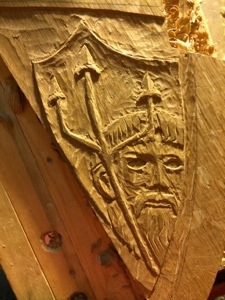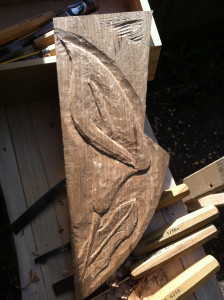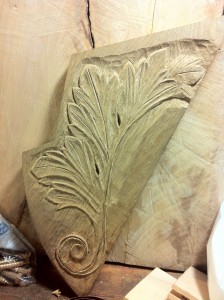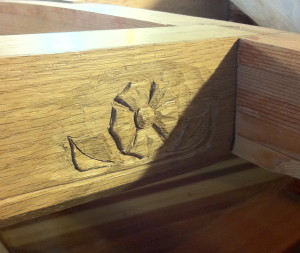Category Archives: Art
a milestone
got the last major rib installed today. 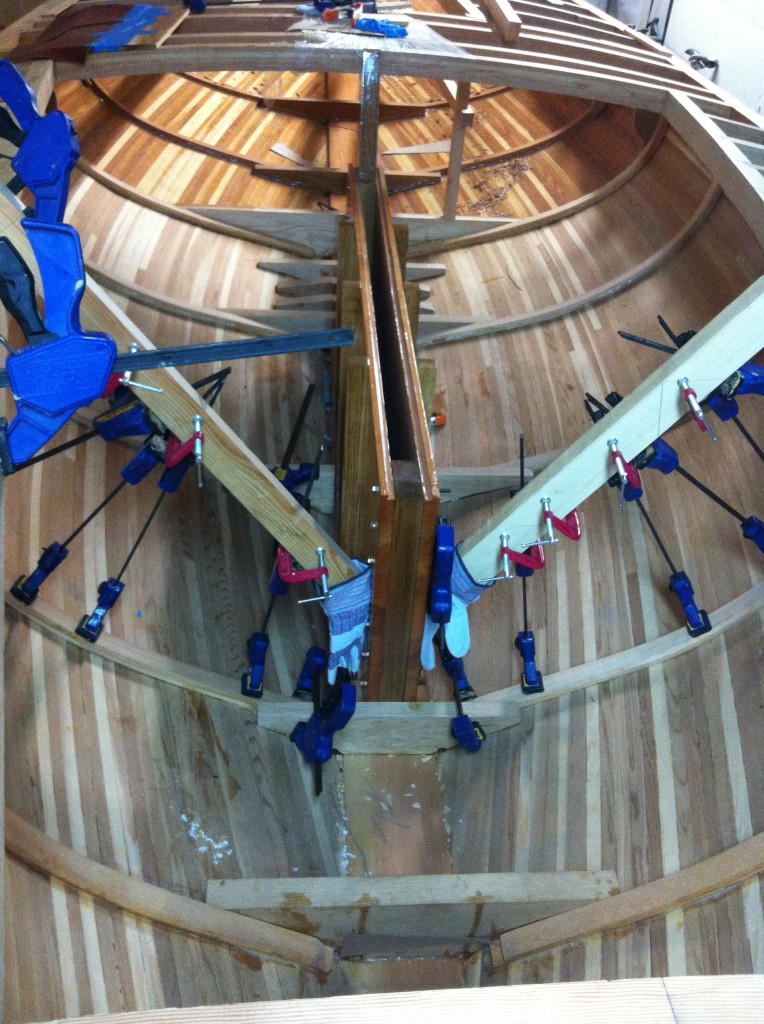
prep work to finish glassing the interior begins as soon as I get back from a short vacation to the east coast. I’m off to see my father’s memorial show at the Woods-Gerry gallery at RISD in Providence.
oh my aching knees…
 all the hanging knees for the back of the boat, these will be mounted beneath the cockpit decking, so once in place you’ll never really get to see them again without crawling through a tiny space…
all the hanging knees for the back of the boat, these will be mounted beneath the cockpit decking, so once in place you’ll never really get to see them again without crawling through a tiny space…
this may seem a little pointless… but they are there because I want them to be. and they make me feel better.
so there 😉
from left to right: the curtain, baroque, acanthus, ionic order, art deco, newport shell, art nouveau, and wine grapes.
Sketching
I’ve been going to a life drawing class lately.
(You can tell I’m years out of practice…)
In addition to that, I’ve been doing a bit of wood carving. (decorative hanging knees for the boat…)
Both of these endeavors have started me sketching again. while I’ve been at it, I’ve been thinking about what makes sketching a pleasurable way to work out problems, and whether or not that experience can successfully be translated to a touchscreen device. Last year I did a considerable amount of work on a storytelling application, only to realize that at the time it was a bit beyond my capacity. I have somewhat more manageable idea now, based on the series of sketches I did as preliminaries to the wood carving. I realize that having to draw to a brief, or at least within a certain set of restrictions involves a fair amount of repetition. and performing repetitive tasks is what computers are all about… so watch this space. I may need a beta tester.
though realistically, this isn’t going to happen very quickly, I have a hobby…
Acanthus leaves
Acanthus leaves are a common part of classical decoration. Part of the classical Corinthian style, they area a motif that has aged well, and can be made to look both classic and modern, sometimes simultaneously.
curiously, much of the acanthus in decor bears little actual resemblance to the leaves of the acanthus plant. This example from the Palatine hill in Rome is a pretty good example.
I have not done a particularly good job of aping the original plant or even the classical motif, but over all I think I got the basic flavor about right…
pictured is one of a set of hanging knees supporting the deck of my boat in the cockpit area. once the deck goes on, this will not be readily visible to anyone who is not crawling around where they shouldn’t be, but it seemed worth it nonetheless. 17 more to go, but I’ll be trying out a different design on each one.
Maybe sometime I’ll add something about my carving technique, but for an initial bit of free info, carving in dry white oak is more than a little bit of a pain in the ass…
details, details…
The nice thing about building your own boat is that you can add little things everywhere…
there are a lot of parts to the boat that will likely never be seen by anyone ever again once the deck goes on, but sometimes I feel that they need a little extra attention anyway. I remember the big deal that the Art History teachers made of the fact that the pediment sculptures on the Parthenon were sculpted in the round despite the fact that no one would ever see the backs of them when they were inset into a gable 40 feet over your head. theoretically to appease the gods, but I suspect more likely that the sculptors just couldn’t leave well enough alone… or were being paid by the hour…
so in this case, on the side of the oak cockpit frame, roughly where your feet would get to if you were completely tucked under the seats sleeping, goes this little flower.
there will probably be more…
side note: two things that this has taught me are a) having a selection of gouges is important, and b) gouges are bloody expensive…
drawing straight lines…
a friend of mine growing up used to quote her art teacher’s heavily nasal intonation: “an artist does not use a ruler!”
but drawing straight lines freehand is tricky. the best advice I ever got was similar to Gretzky’s advice about playing hockey, “skate where the puck’s going, not where it’s been.” the mistake that many people make when picking up a pencil and trying to draw is that they look at the end of the pencil.
one of the neat things about the kinesthetic sense is that you can put your finger where you think it ought to go without looking at your finger, you look at where you want to put it, and your finger moves there in the most efficient way possible. generally a straight line. you do the same with the pencil. so the steps are:
- put pencil where you want the line to begin.
- move your eyes to look at where you want the straight line to end.
- move the pencil point to that point. just leave it in contact with the page.
try it, you’ll be amazed how straight your lines become.
it is surprisingly tricky however. due to much practice with handwriting, people are pretty used to looking at the tip of the pencil to see what they’re writing. you don’t focus at the end of the line when you’re writing at the beginning. it is a skill worth cultivating, so work at it.

